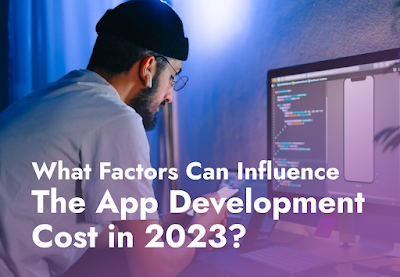Introduction
In the modern digital landscape, app development is a fundamental aspect of business and innovation. From entrepreneurs to established enterprises, the question of app development cost is a common concern. This extensive handbook delves into the skill of utilizing an App Cost Calculator, providing you with the proficiency to navigate the financial landscape of your project. Whether you’re commencing your app development adventure or a seasoned expert, our objective is to furnish you with the wisdom and resources needed to craft judicious choices, thereby guaranteeing that your app venture adheres to your financial plan. Join us on this expedition as we demystify the realm of app cost estimation, paving the way for your journey toward achieving success in app development.
What is an App Cost Calculator?
An app cost calculator is a specialized tool that helps you estimate the financial requirements for developing a mobile app. It takes into account a variety of factors such as project scope, platform selection, design requirements, development hours, third-party integrations, testing, project complexity, and allows for budget adjustments. Using an app cost calculator is essential to ensure you have a realistic understanding of what your app development project will cost.
How App Cost Calculators Work
App Cost Calculators work by assessing various project factors, such as features, complexity, and platform, to provide a ballpark estimate of the development cost, helping stakeholders gain an initial understanding of the financial scope of their app project.
1. Project Scope Assessment
The app cost calculator begins by assessing the project scope. It takes into account the features and functionalities you want to incorporate into your app, helping you determine the complexity of the project.
2. Platform Selection
Different platforms (iOS, Android, or both) have their unique development requirements. The calculator helps you estimate the cost for each platform, depending on your target audience.
3. Design Requirements
The design of your app significantly influences the cost. Whether you’re going for a simple user interface or a highly detailed and interactive design, the calculator considers these factors.
4. Development Hours
This portion assesses the projected development duration for your project, with the understanding that the intricacy of your application will directly influence the amount of time required for development.
5. Third-Party Integrations
If your app requires integrations with other services or APIs, the calculator factors in the cost of integrating these third-party services.
6. Quality Assurance and Testing
Testing and quality assurance play pivotal roles in the success of an application. The calculator provides estimations for the expenses linked to different testing stages, guaranteeing the seamless functionality of your app.
7. Project Complexity
Project complexity, including the number of features, the technology stack, and unique requirements, can significantly impact the overall cost. The calculator takes this into account.
8. Budget Adjustments
App cost calculators often allow you to set a budget limit. If the initial estimate exceeds your budget, you can adjust various factors to meet your financial constraints while still delivering a viable product.
Types of App Cost Calculators
These calculators help individuals and businesses understand the potential costs associated with their app development projects. There are various types of app cost calculators available, each tailored to specific aspects of app development. Here are some informative details about different types of app cost calculators:
1. Feature-Based Calculator
These calculators estimate costs based on the features you want to include in your app. The more features, the higher the cost.
2. Platform-Specific Calculator
These calculators focus on the choice between iOS, Android, or cross-platform development, offering estimates tailored to the selected platform.
3. Design and UI/UX Calculator
For those who prioritize design, these calculators provide cost estimates based on the complexity of the user interface and user experience.
4. Maintenance and Support Calculator
These calculators factor in the expenses associated with post-launch support, updates, and ongoing maintenance of the app.
5. Database and Backend Calculator
Estimate the expenses related to developing and maintaining the backend infrastructure and database for your app.
6. Pre-Packaged App Development Calculator
These calculators provide estimates for building apps using pre-made templates or frameworks, which can significantly reduce costs.
7. Customization and Complexity Calculator
For complex projects or unique requirements, these calculators offer tailored cost estimates, taking into account the specific intricacies of your project.
Benefits of Using an App Cost Calculator
An App Cost Calculator is a valuable tool that can assist individuals and businesses in estimating the expenses associated with developing a mobile or web application. Here are several benefits of using such a tool:
- Time Savings
App cost calculators can generate estimates quickly, saving you time that would otherwise be spent on manual cost calculations.
- Covers All App Features
These calculators ensure that you don’t miss out on any essential app features, helping you create a comprehensive project scope.
- To Compare Estimates
You can use the estimates from different types of calculators to compare costs and make informed decisions about the development approach.
- Risk Mitigation
By accurately estimating costs, you can better plan for contingencies, reducing financial risks associated with app development.
- Reduced Miscommunication
Using a calculator provides a clear and detailed breakdown of costs, reducing the likelihood of miscommunication between you and your development team.
Conclusion
In the realm of mobile app development, precise cost assessment holds the utmost significance. Employing an app cost calculator serves as a priceless asset, aiding in the meticulous planning of your project, resource allocation, and informed decision-making concerning your app’s creation. By gaining insight into the various types of calculators and their advantages, you can initiate your app development journey with assurance, equipped with a comprehensive grasp of the fiscal aspects of your endeavor. Therefore, remember this advice: the utilization of an app cost calculator is a prudent step towards achieving a triumphant app.





